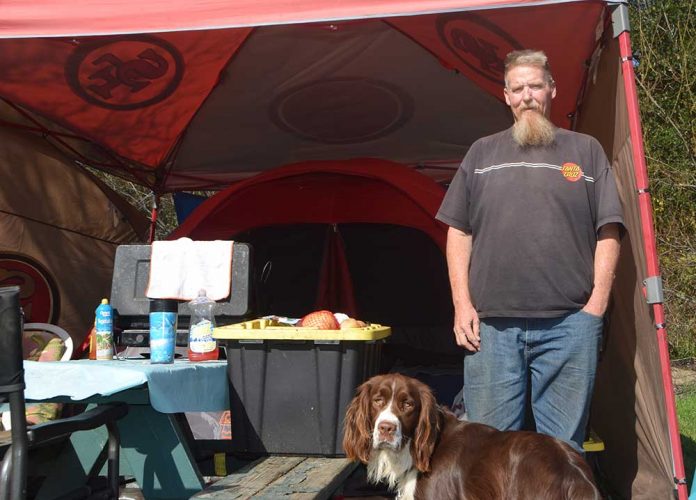In the 2017 Point in Time homeless census count conducted on Jan. 24 and 25, 5,448 homeless individuals—including veterans, families with children, former foster youth, domestic violence victims, seniors, people with disabilities, and the working poor were identified living in encampments, cars, RVs, abandoned buildings or on the streets of Santa Clara County. Only 26 percent of homeless individuals were staying in emergency shelters, domestic violence shelters or transitional housing. The remaining 74 percent are unsheltered.
Since 2015 there has been a 64 percent increase in homelessness in Gilroy, along with even greater increases in Morgan Hill and San Martin. Although homelessness went down nationally, the West Coast saw increases — primarily in the number of homeless youth and young adults. With very few low-cost housing options available, such as permanent or transitional housing, or even a year-round shelter is South County, many homeless individuals are forced to sleep outside illegally in conditions that are unsafe, inhumane and unsanitary.
Gilroy Compassion Center has addressed the need for an interim solution to homelessness by developing a “safe-legal-place-to-sleep” program called Almost Home. This program provides stability to the individuals who participate by providing a non-traditional transitional program in a campground setting as an alternative to camping illegally near businesses, parks or creeks. They have a legal place to camp with access to bathrooms, showers, garbage cans and fire rings. The program has been entirely funded by private donations, and has been successful in helping people to attend school and job training, get and keep jobs, and find housing.
During the recent Gilroy City Council study session on homelessness and crime, Police Chief Scot Smithee stated, “We can’t arrest our way out of this problem.” We agree that arresting people is not the answer to homelessness (though it may be a good response to crime, they are not the same thing.) Chief Smithee also indicated the need for a “balanced approach” in dealing with homelessness.
We have seen that a one-sided approach to homelessness, the so-called zero-tolerance stance, has not worked. The homeless population has increased significantly due to the high cost and insufficient supply of housing. Ticketing homeless individuals for “quality of life” crimes such as “illegal lodging” only creates additional barriers for employment and housing and has cost taxpayers $786 million over six years for criminal justice expenses, according to the 2015 county report on the Costs of Homelessness in Silicon Valley. Leaving people in unsafe and unsanitary encampments risks public health.
We know what works and we need to do more of it. Our commitment to real alternatives should balance efforts at enforcement. We encourage the city council to support solutions that help people who are willing to do the work that is needed to change their lives.
Dee Pearce, Gilroy Compassion Center Director











